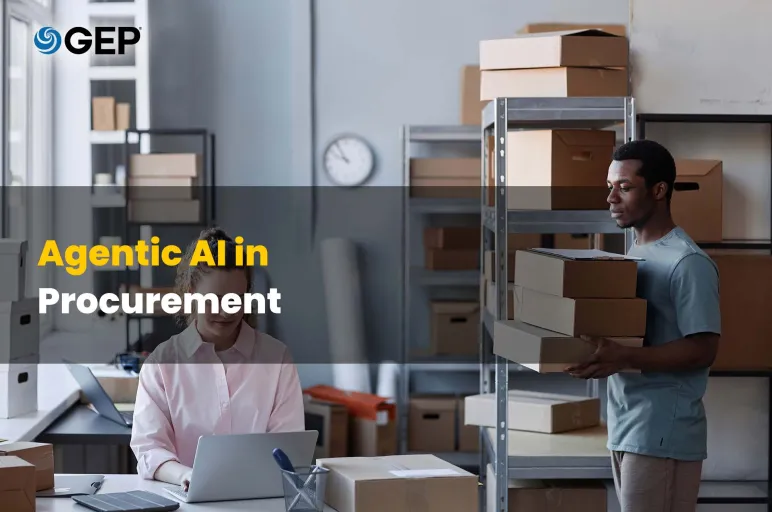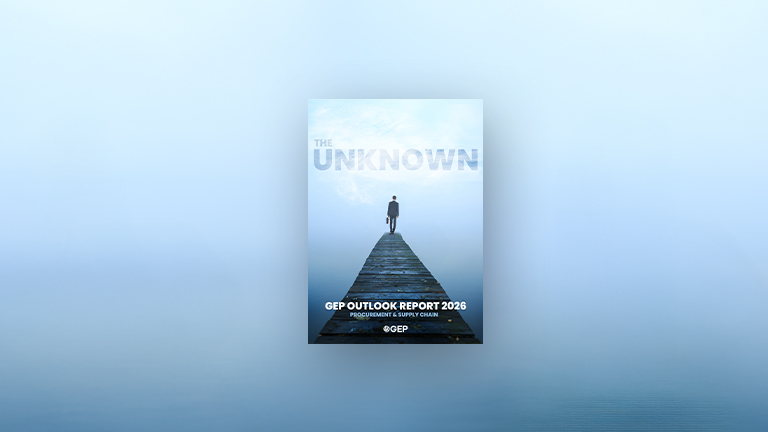
Why Agentic AI Is Procurement’s Most Capable New Hire
- Procurement technology has come a long way, from analytics to automation and now autonomy.
- Agentic AI marks a shift from systems that wait for instructions to partners that get work done.
- It is where human expertise meets AI execution in a way that feels practical, not futuristic.
November 07, 2025 | Procurement Software 3 minutes read
Imagine a workflow where procurement software does all the routine work. It looks through your spend data, finds a savings opportunity in office supplies, and gets moving. It drafts an RFP, picks suppliers from your roster, and sends the first messages.
This is not a future scenario. It is what agentic AI is starting to make possible.
Procurement Tech and the Three As
You can think of procurement technology’s progress in three stages.
First came analytics, where teams moved beyond spreadsheets to spot spending patterns and base decisions on data instead of intuition.
Next came automation. Rules-based systems and robotic process automation took care of repetitive tasks like invoice processing and purchase order routing. These digital helpers handled routine work so people could focus on exceptions and complex cases.
Both stages still relied on human oversight and direction.
Now we are stepping into autonomy. AI agents combine deep analysis with independent action. They do more than follow rules. They understand context, make decisions within defined limits, and manage full workflows. Think of software that notices a supplier’s financial instability and starts vetting backup options automatically. That is the move from command-based tools to systems that act with context.
The Big Difference
For years, procurement leaned on rules-based automation. It was fine for predictable, step-by-step work, but it was fragile. Change one part of the process and everything stalled until someone fixed it.
Agentic AI is different. It adapts. It learns from data, understands language, and handles messy, real-world details. It can read a supplier’s email and infer intent, condense a long contract into key points, or forecast trends by weighing multiple market signals.
Practical Uses Across Source-to-Pay
This change, from tools that take orders to systems that act with purpose, touches every area of procurement. Here is how agentic AI shows up in practice:
Supplier Onboarding:
Guides new suppliers through setup, collects documentation, runs risk checks, and connects them to payment systems without extra effort.
Market Monitoring:
Tracks prices, geopolitical shifts, and weather that may affect supply chains. When volatility rises, it recommends strategy changes or triggers contract clauses automatically.
ESG Tracking:
Monitors supplier sustainability data and flags possible issues early, well before they become compliance problems.
Purchase Requests:
Checks requests against budgets, suggests suppliers with strong past performance, and routes approvals automatically, escalating only when something falls outside the rules.
Invoice Resolution:
Spots discrepancies, contacts suppliers, reconciles the issue, and updates records, so accounts payable does not need to intervene first.
The Human Element Still Matters
The real strength comes from combining AI with people. AI handles scale, speed, and data. Humans bring strategy, ethics, and relationships.
An AI agent might land favorable pricing, but it cannot build trust or imagine new partnership models. That still takes human intuition. As one expert put it, when two AI systems negotiate, the result may be efficient, but it is rarely innovative. Creativity and collaboration remain human advantages.
Eager to Learn More About Agentic AI?
Get the Agentic AI Playbook for Procurement Pros
Building a Strong Data Foundation
Agentic AI works best when systems are connected. If data stays siloed, the AI sees only part of the picture.
With an integrated source-to-pay setup, all procurement functions share the same foundation. That lets agents operate across the full cycle, not just inside one process.
When procurement data is connected, an AI agent can review supplier performance across contracts, finances, and delivery records at once. The result is smarter decisions and a more streamlined process.
Taking the First Steps
Adopting agentic AI is not about rushing in. A careful, phased approach works best.
- Start with a pilot in a low-risk area.
- Focus on a space where quick wins are visible, such as tail spend or tactical purchases.
- Use early projects to build understanding and confidence.
- Keep oversight in place and review AI decisions for bias or misalignment.
- Expand once the organization trusts the system’s judgment.
The future of procurement is not a choice between humans and AI. It is a partnership, each doing what it does best, and together, rewriting what is possible.



